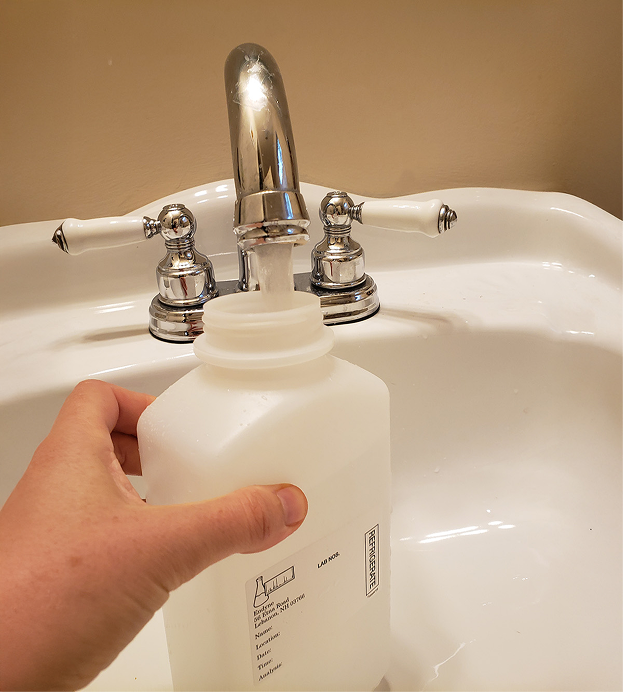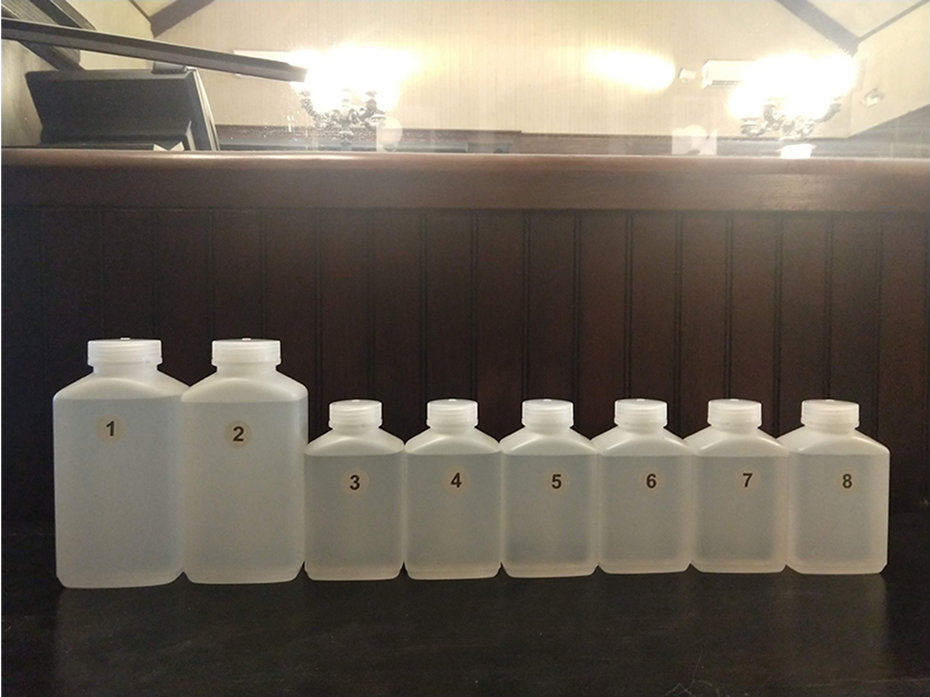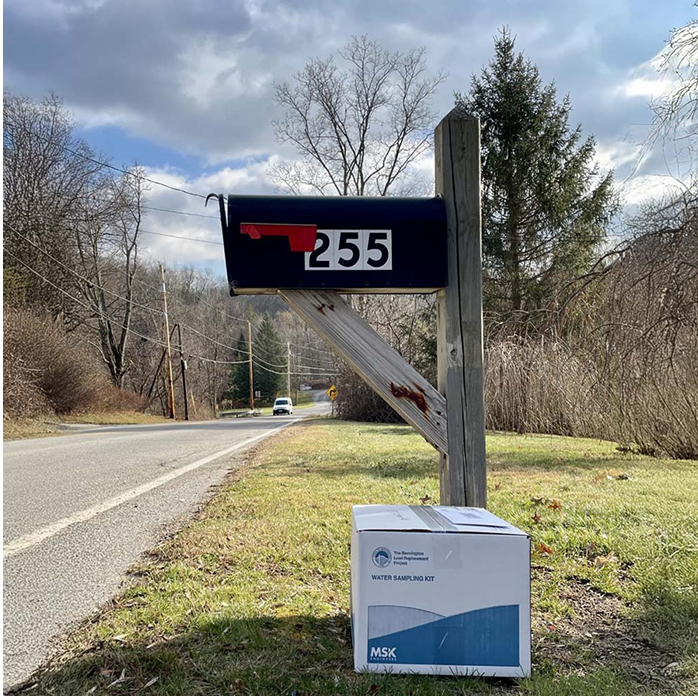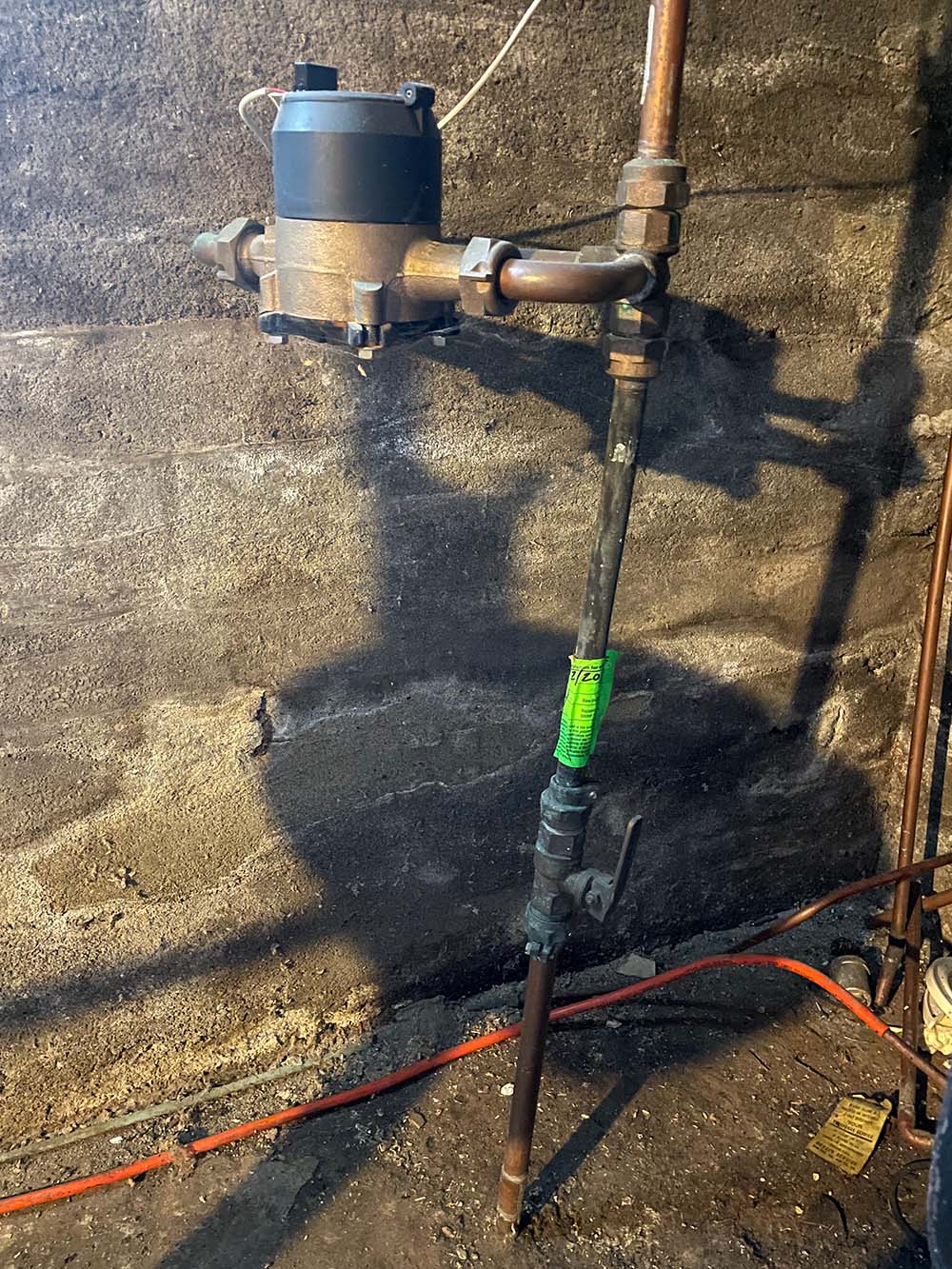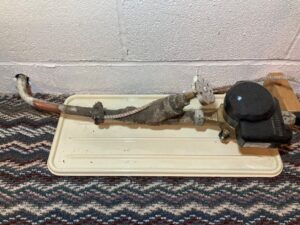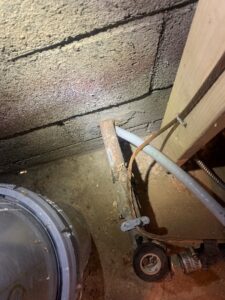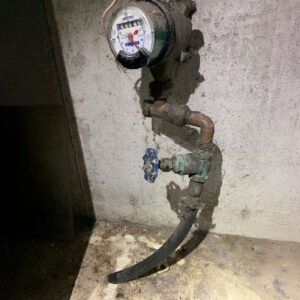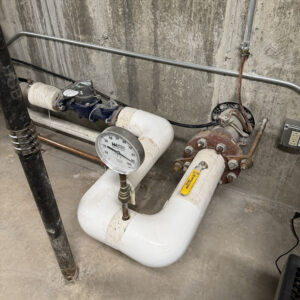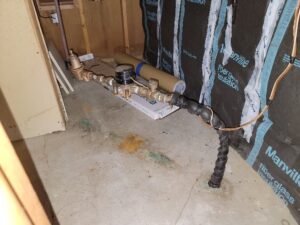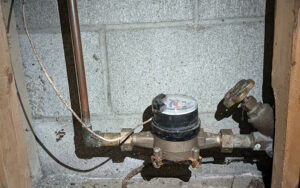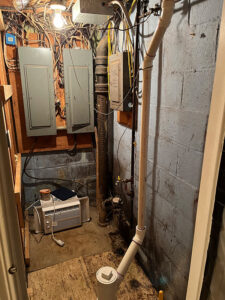Water Service Line Inventory Information for Property Owners
About the Project
This project is funded by the Vermont Department of Environmental Conservation (VTDEC) and there are no costs or fees for property owners. We do not ask for sensitive personal or financial information.
Your local water system is working with MSK Engineers to determine the pipe materials of unknown water service lines. The primary goal of this project is to locate lead and galvanized iron pipes. This project is being conducted in response to new U.S. EPA drinking water regulations passed in 2024, requiring all water systems to categorize service lines previously labeled as "unknown."
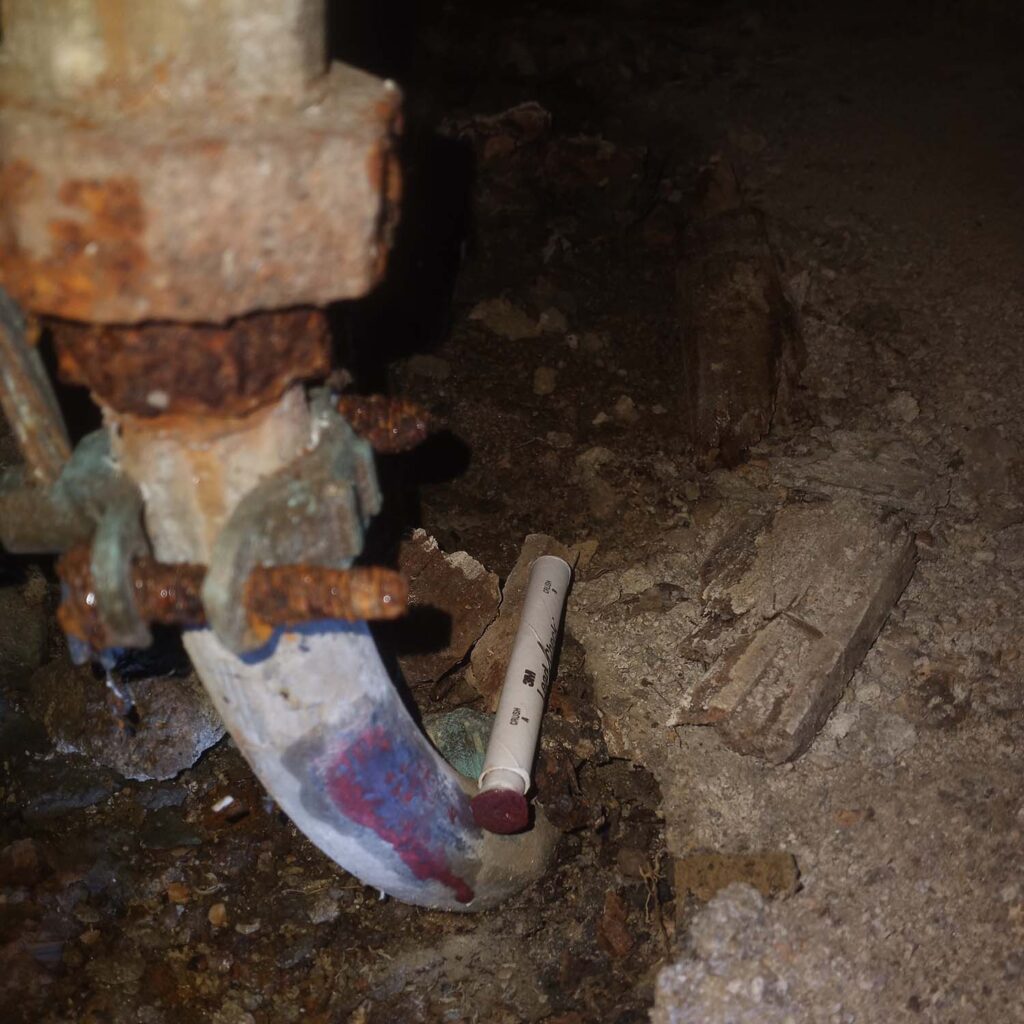
What the Inventory Involves
To complete the inventory, we must identify the pipe material in two sections of your water service line (See FIGURE 1 below for reference.)
1. System-Owned Side
The section of pipe from the water main to the curb stop.
2. Customer-Owned Side
The section of pipe from the curb stop into your property's foundation, typically connecting to an internal water meter or shutoff valve.
FIGURE 1. Parts of a water service line:
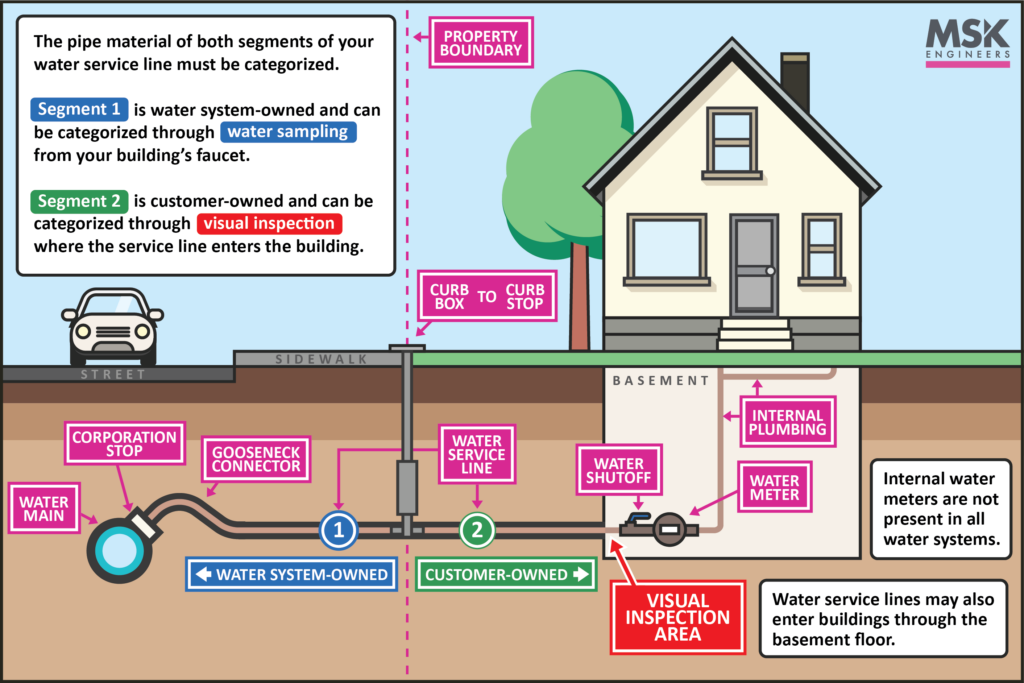
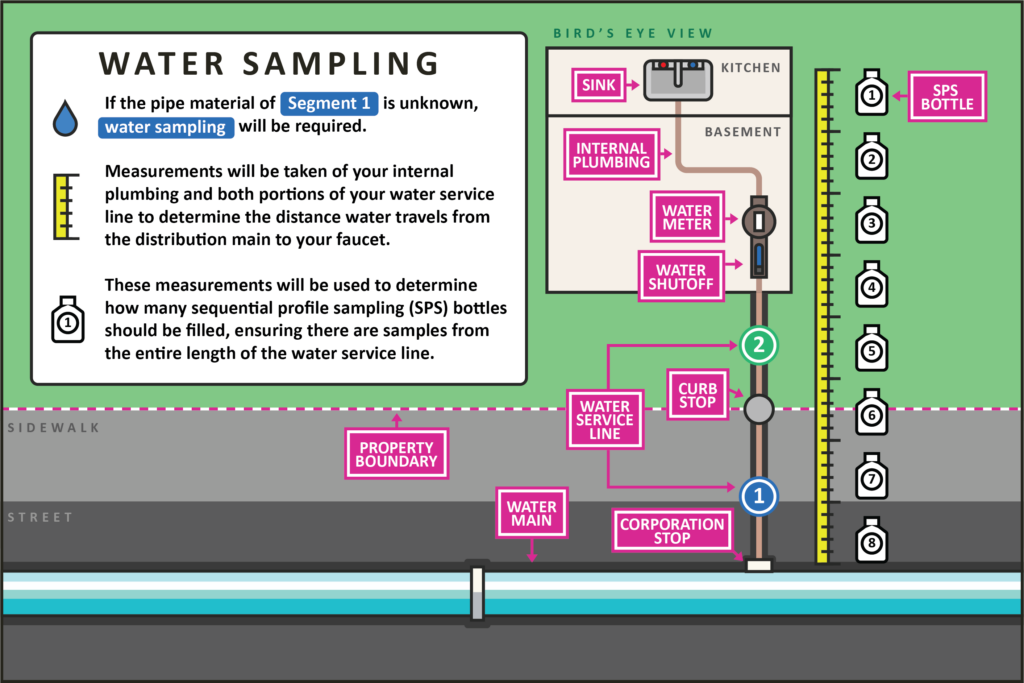
How Pipe Materials Are Identified
Different methods are used depending on which part of the line is unknown:
2. Customer-Owned Side
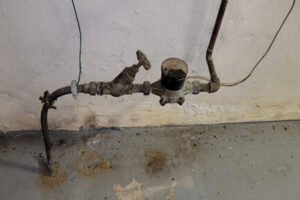
Identified through Visual Inspection.
- Requires checking the pipe entry point into your property. This is typically the section of pipe between the wall or floor and the internal shutoff valve or water meter.
- You can submit a photo or schedule an in-person inspection.
By participating, you help ensure the safety of your drinking water.
What You Need To Do
Check the outreach letter you received from MSK Engineers to see which part of your line is unknown.
Then, follow the appropriate steps below or call MSK at (802) 828-7975 to schedule an appointment.
1. If Only the System Side Pipe Material Is Unknown
✅ Sequential Profile Sampling (SPS) is required. Fill multiple MSK-provided bottles with tap water after at least 6 hours of stagnation. The samples are tested for lead.
✅ Schedule a water sampling appointment by clicking on your water system's link below, or calling MSK at (802) 828-7975.
2. If Only the Customer Side Pipe Material Is Unknown
✅ A visual inspection is required to identify the material.
Option 1:
✅ Submit a self-observation with photos using our online form. See the section below on examples of good & bad self-observations.
Option 2:
✅ Schedule an in-person inspection by calling MSK at (802) 828-7975.
3. If Both the System Side & Customer Side Pipe Materials are Unknown
✅ You need both a visual inspection (for the customer side) and SPS water sampling (for the system side). Both of these actions can be completed during one scheduled appointment.
✅ Schedule an appointment for both services by clicking on your water system's link below, or calling MSK at (802) 828-7975.
About Sequential Profile Sampling (SPS)
Sequential Profile Sampling is a reliable method for identifying the material of the system side of your water service line:
How it works:
- MSK staff will visit your property to measure the length and diameter of your water service line.
- You'll receive a set of numbered bottles to fill in sequence using water from your tap. The number of bottles required depends on your service line length.
- To ensure accurate results, the water must remain stagnant (unused) for at least six hours before sampling. This can be done overnight or during the workday.
- Once you've filled the bottles, place them in the box provided by MSK and leave them at your designated drop-off location (such as your porch) and notify MSK of completion and location.
⚠️ IMPORTANT: Water samples must be collected within 1 week of filling.
How to Submit a Good Self-Observation
When submitting a self-observation, your photo should clearly show the water service line where it enters your property. If possible, perform a scratch test or magnet test to help identify the material. This helps us accurately determine the pipe material.
✅ Take a clear, well-lit photo of the pipe at the point where it enters your property. Water service lines usually enter through the basement floor or the wall facing the street on which your house is located. Ensure the entire pipe section between the entry point and the water meter or water shutoff is visible in the photograph.
✅ Perform a scratch test or magnet test (if possible) to confirm the material:
- Use a coin or key to lightly scratch a small area of the pipe's surface. This will help expose the material underneath.
- If you're unsure of the material, do a magnet test—if a magnet sticks, the pipe is likely galvanized iron. If it doesn't, it may be lead, copper, or plastic.
⚠️ Do not submit photos where the pipe is covered by insulation, drywall, or other obstructions. If the pipe is not visible, remove the covering before taking your photo.
✅ Need Help? If you have any trouble, contact MSK Engineers or schedule an appointment for assistance.
For more information, check your town's Water Service Line Inventory page or contact MSK Engineers by emailing example@clever-ship.flywheelstaging.com or calling 802-828-7975.
Examples of Good and Bad Self-Observations:
Good Self-Observations (Acceptable Photos)
Bad Self-Observations (Unacceptable Photos)
Photos that do not clearly show the service line material will be rejected. If you are unable to take an acceptable photo, please schedule an observation with MSK.
Additional Resources
Find out more from the U.S. Environmental Protection Agency.
https://www.epa.gov/ground-water-and-drinking-water/basic-information-about-lead-drinking-water
Common questions and answers about lead pipes.
Overall Project:
What are the 2021 Lead and Copper Rule Revisions (LCRR)?
- Federal regulations updated by the U.S. EPA in 2021 to reduce lead and copper levels in drinking water requires water systems to:
- Conduct a service line inventory
- Prioritize and replace lead and galvanized service lines
- Educate the public to minimize lead exposure
- Improvements to the LCRR were made in October 2024, which requires all public water systems to identify all unknown service lines and conduct replacements of lead and galvanized requiring replacement lines.
Why is the lead water service line replacement project important?
- Lead exposure can cause serious health risks, especially for children, pregnant women, and vulnerable groups
- Lead can cause developmental delays and learning difficulties
- Replacing lead lines reduces lead exposure, ensuring safer drinking water and public health
General Questions:
Why did I receive a letter?
-
If you received a letter, either the customer-owned segment (from the curb to inside the building) or the system-owned segment (from the water main to the curb stop) of your service line is classified as "unknown."
-
Under the U.S. EPA's Lead and Copper Rule Revisions (LCRR/LCRI), every homeowner must be notified if their service line material is unknown.
I received a letter that says my service line is unknown, does that mean there is lead in my water?
-
Not necessarily. The letter only means that the material of your water service line is currently unknown. This could apply to the entire line or just a portion of it. However, because there are no records confirming the material, it's possible that part of the line could be made of lead. Due to the health risks of lead, the State is requiring all water systems to identify and replace any lead service lines.
Who is paying for this project and these services?
-
Your town's Service Line Identification project is funded by state and federal grants, including EPA funding. The project and its services are provided at no cost to the homeowner—you will not receive a bill for any observation or sampling conducted at your property.
Is this required?
- Yes. The State requires every water system to determine the material of all unknown water service lines by 2034.
What happens if my service line is identified as lead or galvanized requiring replacement?
-
If your water service line is found to be lead or galvanized requiring replacement, your water system will:
-
Notify you of the results
-
Provide guidance on replacement options
-
Recommend steps to minimize lead exposure during replacement
-
-
Replacing lead and galvanized lines is a priority for protecting health and safety.
Appointments:
How do I make an appointment?
- An observation or sampling appointment can be made by clicking on your town's scheduling link above.
Do you need to enter the house?
-
If only the customer-owned portion of the service line is unknown, you may choose to submit an online self-observation form, which means MSK does not need to enter your home.
- However, if the system-owned portion is unknown, you must schedule an appointment so an MSK technician can enter the home to assess and size the pipes.
Do I need to be home for an observation or sizing appointment?
-
Yes. Either the homeowner or a tenant must be present for the observation or sizing appointment. They will need to provide the MSK technician with access to the necessary areas of the building. The technician can also answer any questions and share helpful information about the service line.
Learn more about the water sampling process.
What is Sequential Profile Sampling (SPS)?:
Sequential Profile Sampling (also known as Sequential Sampling) is a water testing technique in which multiple water samples are taken in succession after a period of stagnation and then tested for the presence of lead.
The number of sampling bottles that you will receive is proportionate to the diameter and length of your property's water service line. By filling the sampling bottles in succession, you can collect the entire volume of water that was in your property's internal and external water pipes. Conducting this type of water sampling allows us to determine if lead is present in the underground section of the water service line without having to dig up the line.
Sequential Profile Sampling first involves MSK measuring the length and diameter of your water service line at an in-person appointment. We will then give you a set of bottles that you will fill with water from your tap after a period of stagnation. The bottles must be filled with water that has sat stagnant (non-flowing) for at least 6 hours in order to get the most accurate results. The stagnant period could be overnight or over a workday. You will then put your water samples in the box that MSK provides you with and leave the box (on your porch/at a drop-off location). Be aware that the water sample bottles must be received by MSK within one week of being filled.
Check your local water system's website for updates and resources.


